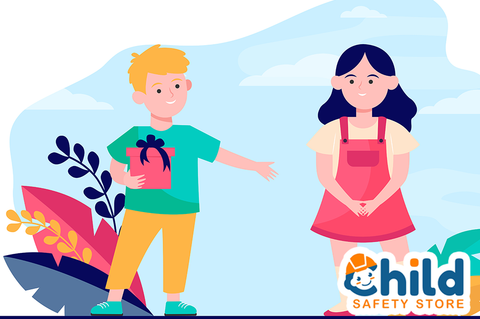
Setting Healthy Boundaries for Kids: Personal Space and Consent
It is never too early to start setting healthy boundaries for kids. When it comes to parenting, one of the most critical lessons includes teaching little ones about personal space and consent. These are fundamental lessons that help kids to understand and respect their own boundaries, as well as those of others.
Nowadays, conversations about consent are gaining more prominence. These guidelines are important for adults, but it is absolutely essential to start these discussions early. Here are some tips to help parents in their quest for setting healthy boundaries for kids.
Why Teach Kids About Personal Space and Consent?
Every person sets their own boundaries. Understanding personal space and consent goes way beyond physical safety. In a nutshell, it's also about fostering healthy relationships and respecting others' autonomy. By teaching children about these concepts from a young age, parents are able to lay a solid foundation for them to develop empathy, communication skills, and a strong sense of self-worth.

Children who are aware of personal space and consent are better equipped to recognize and assert their boundaries in various situations, whether it's with friends, family members, or strangers. They learn to trust their instincts and speak up when something doesn't feel right. This is crucial for their overall well-being.
Understanding Personal Space
Put simply, personal space refers to the physical distance that a person keeps between themself and others. As mentioned earlier, this distance may vary from person to person and culture to culture. That said, every one of us is different. When it comes to kids, especially very young kids who might not be used to socializing, this can be a tough lesson. Nevertheless, it is essential for children to learn how to respect others' personal space and assert their own boundaries.
Parents can teach children about personal space through simple activities such as role-playing or discussing scenarios where personal space might be invaded. Encourage your child to express how they feel when someone stands too close or touches them without permission. By doing so, you help them develop a greater awareness of their own comfort levels and the importance of respecting others' personal space.
Introducing the Concept of Consent
According to RAINN, consent is the voluntary agreement to engage in a specific activity or behavior. It requires clear communication, mutual understanding, and respect for the other person's wishes. Teaching children about consent empowers them to recognize when they have the right to say "yes" or "no" to something and understand that others have the same right.

Start by teaching children about consent in everyday situations, such as asking permission before borrowing a toy or hugging a friend. Emphasize the importance of listening to others' responses and accepting their decisions without pressure or coercion. By incorporating consent into daily interactions, both on and off the playground, children learn to value and prioritize mutual respect and consent in all relationships.
Practical Tips for Teaching Healthy Boundaries for Kids
Model the Behavior You Want to Teach
Children learn by observing their parents' behavior. Model respectful communication, boundaries, and consent in your own interactions with them and others.
Always Use Age-Appropriate Language
Depending on the age of your youngster, it is important to tailor your lessons appropriately. Any discussions about personal safety, space and consent should fit your child's age and developmental level. Use simple, concrete examples that they can understand.
Create a safe and supportive environment where your child feels comfortable expressing their feelings, concerns, and questions about personal space and consent.
The Power of Saying “NO”
Many kids (and plenty of adults!) find it difficult to simply say no. Most people want to be agreeable, so they may not speak up for themselves. Help your child understand that they have control over their own body and can say "no" to any physical contact that makes them uncomfortable, even from trusted adults.
Be consistent in enforcing boundaries and the consequences for violating them. Teach your child that it's okay to assert their boundaries and walk away from situations that make them feel unsafe or uncomfortable.
Teaching children about personal space and consent is an ongoing process that requires patience, empathy, and open communication. By empowering children to understand and respect their own boundaries, as well as those of others, parents lay the groundwork for healthy relationships built on mutual respect and understanding.
